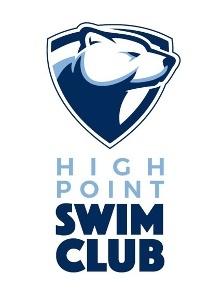Dryland starts this week
DRYLAND STARTS this week...
As we continue to move our team forward; we have redesigned the dryland program to be more ‘curriculum based’ verses the free-range. Many swim programs do not have a ‘progression’ from one group to the next.
We have attempted to identify a better progression for our dryland.
The program should help provide a strong foundation for all swimmers as they continue to progress with our team.
We will also be utilizing periodic dryland assessment testing (as we did last week). Our dryland program will be compatible with the swim practice plans, including test sets.
The program curriculum will follow three key phases.
Stabilization phase
Strength phase
Power phase
A few things we will need from the swimmers include:
1 = Be Prepared
A. Appropriate attire (footwear that provides athletic support and clothing that allows athletic movements)
**Athletic Shoes (not crocs, flip flops)
**Shorts / sweats
**T-shirt
**Small Towel (clean up sweat)
B. Bring a water bottle to each session. Swimmers should have a water bottle of
At least one liter.
C. Bring all necessary equipment for dryland (as communicated by your coach)
This includes exercise mats, medicine balls, resistance tubing-bands, etc. We have a selection of equipment.
But to be sure the athlete has what they need, they may want to have their own mats, bands, medicine balls, etc. Many of these items are available at Dick's sporting good, Amazon, WalMart or Hibbett.
2 = Be Punctual
We only have about 25 actual minutes of dryland training time. Please be sure to arrive on time. Once in the dryland practice, transitions between exercises should be quick and efficient. The program is designed to help our swimmers. Swimmers must be present to take advantage of the program.
3 = Be Patient
The program will begin slower than some athletes may be use to. In order to streamline the program, we have to take a few steps back to see where we are. The first couple of weeks, coaches will be looking for fundamentals of basic movement and technique. Although the exercises may be basic, correct form and tempo will make a difference.
4 = Be Persistent
There are several of the exercises that can be done at home. On non-dryland days, swimmers can go through the introductory part of the program while at home. Basic movements can include crunches, bird dogs, cobras, planks and floor bridges. They won’t need extra equipment and the exercises will help build core, basic strength and balance. If swimmers want to purchase home equipment - start with a pull-up bar.





